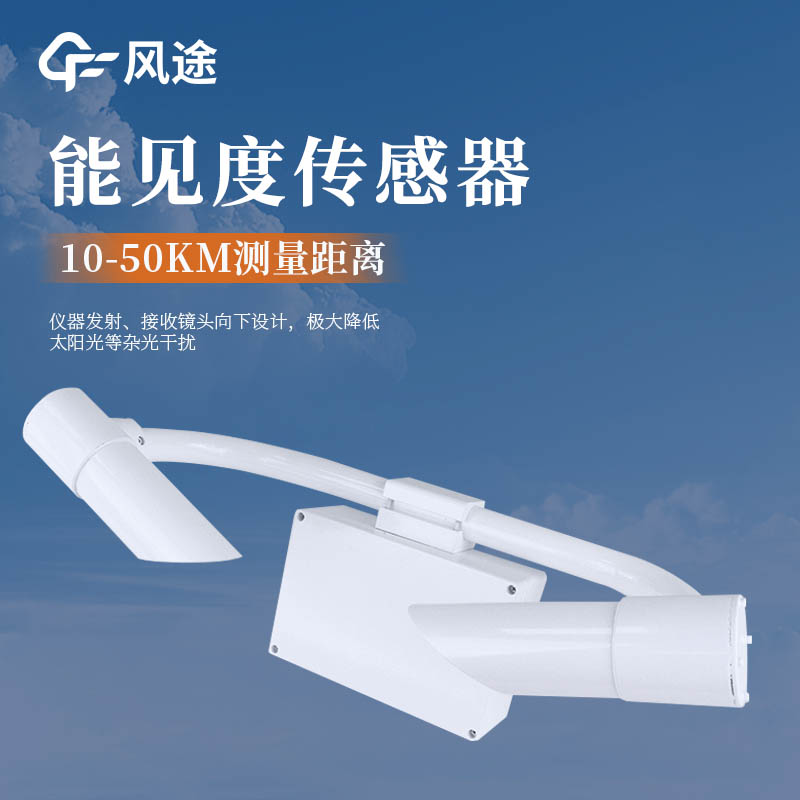Shandong Fengtu IOT Technology Co., Ltd
Sales Manager:Ms. Emily Wang
Cel,Whatsapp,Wechat:+86 15898932201
Email:info@fengtutec.com
Add:No. 155 Optoelectronic Industry Accelerator, Gaoxin District, Weifang, Shandong, China

Sales Manager:Ms. Emily Wang
Cel,Whatsapp,Wechat:+86 15898932201
Email:info@fengtutec.com
Add:No. 155 Optoelectronic Industry Accelerator, Gaoxin District, Weifang, Shandong, China
time:2025-07-22 09:33:52 source:Weather Station viewed:187 time
In the modern transportation system, accurately grasping traffic conditions is crucial for ensuring travel safety and improving traffic efficiency. This relies on a series of advanced instruments, among which Weather Visibility Sensors, Road Condition Sensors, and Laser-based Snow Depth Sensors help obtain precise traffic condition information.
1. Weather Visibility Sensor
Atmospheric visibility, which determines the driver's line of sight, is a key meteorological factor affecting traffic safety. The FT-N80 Visibility Sensor operates based on the 35° forward scattering principle. Its transmitting end emits infrared light via an infrared LED light source. As the infrared light propagates in the air, it scatters due to gas molecules, aerosol particles, fog droplets, etc. The receiving end captures the intensity of the scattered light to determine the visibility distance and continuously measures and outputs visibility data.
Its default measurement range reaches 0-800,000 meters, with measurement errors controlled at ≤1KM ±2% and >1KM ±10%, and a resolution of 1 meter. In terms of design, the optical component lens faces downward with a protective cover to prevent precipitation, spray, or dust from entering. The protective cover, made of aluminum alloy with an anti-corrosion coating, along with overvoltage and electromagnetic protection devices, ensures the sensor's performance in complex environments. It provides traffic management departments with accurate data on potential traffic risks caused by visibility changes, enabling them to take measures such as speed limits or road closures.
2. Road Condition Sensor
Road surface conditions also impact driving safety. The FT-LM2 Road Condition Sensor is based on spectral analysis technology. Its built-in light source emits monochromatic light, which is focused by a lens and irradiated onto the road surface. Due to differences in road material and state, the reflected light varies in intensity and spectral characteristics. The sensor accurately measures road conditions by analyzing the reflected light. It monitors a wide range of parameters, including road temperature, road status (dry, damp, wet, waterlogged, icy, snowy), water depth, ice thickness, snow depth, and slipperiness. It can detect trace ice crystal formation in the early stage, providing early warnings for road condition analysis and helping road maintenance personnel arrange snow removal and de-icing operations reasonably. Adopting a non-contact detection principle, it is installed on roadside poles or weather stations, avoiding damage to the road surface. It can accurately monitor even in heavy traffic and supports RS485 and 4G transmission methods to adapt to different installation environments.
3. Laser-based Snow Depth Sensor
In areas with frequent snowfall in winter, monitoring road snow accumulation is essential. Fengtu's Laser-based Snow Depth Sensor uses the phase-shift laser ranging principle, completing snow height measurement within 1 second with millimeter-level precision (resolution 1mm, accuracy ±1mm). It supports RS485/4G data transmission, uploading data to a free monitoring cloud platform for users to view remotely in real-time. It offers flexible installation options: it can be paired with a separate pole or integrated with a weather station, and can automatically measure tilt angles. Equipped with a heating function that activates automatically at low temperatures, it prevents temperature changes from affecting measurement results. This helps traffic departments promptly understand road snow conditions, arrange snow removal operations, and ensure road smoothness.
In summary, Weather Visibility Sensors, Road Condition Sensors, and Laser-based Snow Depth Sensors provide data support for accurate traffic condition monitoring from different dimensions, jointly safeguarding traffic safety.

Rainfall is one of the key parameters in meteorology and hydrology, and precise measurement of precipitation is crucial for disaster prevention and mitigation, water resource management, and climate research. In meteorological early warning systems, real-time rainfall data serves as an important bas...
Adverse weather conditions pose a significant threat to the safe operation of expressways. Severe meteorological phenomena such as waterlogged road surfaces, blizzards with icing, dense fog and patchy fog, and sandstorms not only reduce atmospheric visibility but also alter road conditions. Statisti...
Atmospheric visibility refers to the maximum horizontal ground distance at which a person with normal vision can clearly see the outline of a target under current weather conditions. As a crucial basis for judging atmospheric environmental conditions, it directly influences our assessments of atmosp...
The marathon is an extremely demanding test of the physical fitness and endurance of the participants, and meteorological conditions play a crucial role in it. Unsuitable meteorological conditions can have many negative impacts on long-distance running. In a high-temperature environment, the human b...